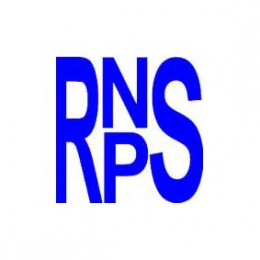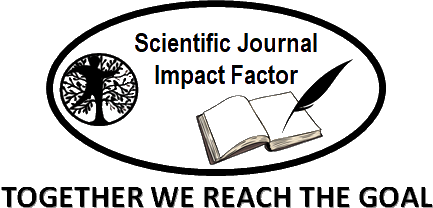Eosinophilic meningoencephalitis caused by parasitation of Angiostrongylus cantonensis
Keywords:
Palabras claves, Angiostrongylus cantonensis, meningoencefalitis eosinofílica, prevención, tratamiento. Angiostrongylus cantonensis, eosinophilic meningoencephalitis, prevention, treatment.Abstract
Background: infectious diseases are a serious problem, especially in poor countries. Those that affect the central nervous system (CNS) have a group of clinical, pathological and therapeutic peculiarities. Eosinophilic meningoencephalitis is a specific case of these conditions, characterized by the presence of eosinophils in the cerebrospinal fluid. This parasitosis is more frequent in children in tropical countries because the African giant snail, intermediate host of its causative agent, can be a harmless animal.
Objective: to characterize eosinophilic meningoencephalitis from its causal agent, preventive measures, as well as the most effective diagnostic-therapeutic behaviors used in its management.
Methods: a documentary analysis of the most recent published literature on the subject was carried out using trusted search engines such as Google academic, SciELO, Scopus and Clinical Key. 30 sources in Spanish and English were used to carry out this article, of which 60 % belong to the last five years.
Results: in Cuba the only cause of eosinophilic meningitis is that caused by Angiostrongylus cantonensis larvae. This nematode has a life cycle that consists of five stages. Recognition of symptoms is essential for its diagnosis, as well as knowing the possibilities of exposure to the snail, but final confirmation depends on performing a PCR.
Conclusions: there are controversies regarding treatment, hence prevention is the best weapon to guarantee optimal health status in the population.
DeCS: ANGIOSTRONGYLUS CANTONENSIS/parasitology; MENINGOENCEPHALITIS/diagnosis; MENINGOENCEPHALITIS/etiology; EOSINOPHILIA/diagnosis; EOSINOPHILIA/parasitology.
Downloads
References
2. Tunkell A, van de Beek D, Sheld W. Meningitis aguda. En: Bennett J, Dolin R, Martin J, editores. Mandell, Douglas y Bennett. Enfermedades infecciosas: principios y práctica. 8va ed. España: Elsevier; 2016. p. 1142-85.
3. Chemouni, F, Augier A, González F, Clec´ch, Cohen Y. Meningoencefalitis infecciosas del adulto. EMC– Anest Reanim. 2013;39(1):1-24.
4. Serrano González A, Rubia de la F, Pérez Guerrero P, Soto Cárdenas MJ. Meningitis crónica. Medicine [Internet]. 2018 [citado 08 Nov 2021];12(54):3210-7. Disponible en: https://www.clinicalkey.es/service/content/pdf/watermarked/1-s2.0-S030454121830091X.pdf?locale=es_ES&searchIndex
5. Baldwin K, Whiting C. Chronic meningitis: simplifying a diagnostic challenge. Curr Neurol Neurosci Rep [Internet]. 2016 [citado 08 Nov 2021];16:30. Disponible en: https://www.ncbi.nlm.nih.gov/m/pubmed/30366558&ved=2ahUKEwjnmMydy6LqAhWpmeAKHVlYCf8QFjABegQIARAL&usg=AOvVaw0ZDIto3rheaDz6jzHisASb
6. Weatherhead J, Mejia R. Eosinophilic Meningitis. En: Cherry J, Harrison GJ, Kaplan SL, editores. Feigin and Cherry’s Textbook of Pediatric Infectious Diseases. 8th ed. Philadelphia, PA: Elsevier; 2018.p. 217-23.
7. Ramos Robledo A, Dorta Contreras AJ. Diagnóstico neuroinmunológico de meningoencefalitis eosinofílica producida por Angiostrongylus cantonensis. Rev cuban invest bioméd [Internet]. 2019 [citado 08 Nov 2021];38(4):[aprox.17 p.]. Disponible en: http://www.revibiomedica.sld.cu/index.php/ibi/article/view/302
8. Vázquez AA, Sánchez J. First record of the invasive land snail Achatina (Lissachatina) fulica (Bowdich, 1822) (Gastropoda: Achatinidae), vector of Angiostrongylus cantonensis (Nematoda: Angiostrongylidae), in Havana, Cuba. Mollusc Res. 2015;35(2):139-142.
9. Reynosa Aguilar Y, Elías Armas KS, Vega Puentes JO, Céspedes Pereña V. El riesgo de parasitismo por Angiostrongylus cantonensis: una problemática reemergente en Cuba. Rev inf cient [Internet]. Abr 2020 [citado 08 Nov 2021];99(2):178-187. Disponible en: http://scielo.sld.cu/scielo.php?script=sci_arttext&pid=S1028-99332020000200178&lng=es
10. Solomon T, Kneen R. Neurological presentations. En: Beeching N, Gill G, editors. Tropical medicine. Lecture notes. 7th ed. Oxford: Wiley Blackwell; 2014. p. 16-23.
11. Padilla Docal B, Dorta Contreras AJ, Moreira JM, Martini Robles L, Muzzio Aroca J, Alarcón F, et al. Comparison of major immunoglobulins intrathecal synthesis patterns in Ecuadorian and Cuban Patients with Angiostrongyliasis. Am J Trop Med Hyg [Internet]. 2011 [citado 08 Nov 2021];84:406-10. Disponible en: https://www.ncbi.nlm.nih.gov/m/pubmed/21363978&ved=2ahUKEwih4LbH16LqAhVidt8KHSJhB6cQFjABegQIBRAC&usg=AOvVaw1o69qx7fzQGrAvNQ3Y_K7O
12. Manso López A M, Garrido Tapia E. Meningitis eosinofílica causada por Angiostrongylus cantonensis: SOS Caracol Gigante Africano. Convención Internacional de Salud "CubaSalud 2018" [Internet]. La Habana: Convención Internacional de Salud; 2019 [citado 08 Nov 2021]. Disponible en: http://www.convencionsalud2018.sld.cu/index.php/connvencionsalud/2018/paper/view/69/29
13. Epelboin L, Blondé R, Chamouine A, Chrisment A, Diancourt L, Villemant N, et al. Infección por Angiostrongylus cantonensis en la isla Mayotte, Océano Índico, 20072012. PLoS Negl Trop Dis [Internet]. 2016 [citado 08 Nov 2021];10(5):[aprox. 30 p.]. Disponible en: https://www.ncbi.nlm.nih.gov/pmc/articles/PMC4856411/.
14. Solórzano-Alava L, Sánchez-Amador F, Valverde T. Angiostrongylus (Parastrongylus) cantonensis en huéspedes intermediarios y definitivos en Ecuador, 2014-2017. Biomédica [Internet]. 2019 [citado 08 Nov 2021];39:370-84. Disponibles en: https://doi.org/10.7705/biomedica.v39i3.4387
15. Lima MS de, Guilherme E. Diagnóstico, presencia de endoparásitos y conocimiento local sobre la infestación de caracol gigante exótico africano (gastropoda: pulmonata: achatinidae) en las zonas urbanas de Río Branco, Acre, Brasil. Rev Biota Neotrop [Internet]. 2018 [citado 08 Nov 2021];18(3):[aprox. 30 p.]. Disponible en: http://www.scielo.br/scielo.php?script=sci_arttext&pid=S167606032018000300206&lng=en&nrm=iso&tlng=en
16. Tomaz TP, Gentile R, García JS, Teixeira BR, Faro MJ. Inspección de caracoles de agua dulce y terrestres en un municipio predominantemente urbano del estado de Río de Janeiro, Brasil, con énfasis en vectores de parásitos humanos. Rev Inst Med trop S Paulo [Internet]. 2018 [citado 08 Nov 2021];60:[aprox. 20 p.]. Disponible en: http://www.scielo.br/scielo.php?script=sci_arttext&pid=S003646652018005000244&lng=en&nrm=iso
17. Valim DS, Bim S. Diseminación del caracol gigante africano (Achatina fulica): amenaza ecológica, agrícola y para la salud. Rev Maiêut Indaial [Internet]. 2017 [citado 08 Nov 2021];5(1):[aprox. 9 p.]. Disponible en: https://publicacao.uniasselvi.com.br/index.php/BID_EaD/article/download/1753/861
18. Solórzano LF, Martini L, Muzzio J, Hernández H, Sarracent J, Rojas L. Angiostrongylus cantonensis: un parásito emergente en Ecuador. Rev Cub Med Trop [Internet]. 2014 [citado 08 Nov 2021];66(1):20-33. Disponible en: http://revmedtropical.sld.cu/index.php/medtropical/article/view/4/3&ved=2ahUKEwjZu6D116LqAhVFUt8KHQbMAY8QFjAAegQIBBAB&usg=AOvVaw0ie2SmA_uABkws6oIcjARx
19. Martins YC, Tanowitz HB, Kazacos KR. Central nervous system manifestations of Angiostrongylus cantonensis infection. Acta Trop [Internet]. 2015 [citado 08 Nov 2021];141:46-53. Disponible en: https://www.ncbi.nlm.nih.gov/pmc/articles/PMC4312175/&ved=2ahUKEwibyYyy2KLqAhVkRN8KHVtqA4oQFjACegQIDRAG&usg=AOvVaw2TbkRZIEZpukd4Phb58AXG
20. Rodríguez Pérez J, Meijides Mejías C, Ramos Robledo A, Pérez del Vallín V, Mirabal Viel A, Gómez Pérez D, et al. Strongylides in Achatina (Lissachatina) fulica (Mollusca, Achatinidae) in Havana, Cuba. Rev cuban invest bioméd [Internet]. 2019 [citado 08 Nov 2021];38(4):[aprox. 6 p.]. Disponible en: http://www.revibiomedica.sld.cu/index.php/ibi/article/view/312
21. San Martín Marichal A, Sánchez Zulueta E, Fernández Fajardo L, Alfonso López M. Meningoencefalitis eosinofilica: a propósito de 5 observaciones. Rev cubana med [Internet]. Abr 1997 [citado 08 Nov 2021];36(1):29-35. Disponible en: http://scielo.sld.cu/scielo.php?script=sci_arttext&pid=S0034-75231997000100006&lng=es
22. González Aguilera J, Arias Ortiz A. El caracol gigante africano (Achatinafulica) y sus efectos en la salud humana. MULTIMED [Internet]. 2019 [citado 08 Nov 2021];23(4):[aprox. 14 p.]. Disponible en: http://www.revmultimed.sld.cu/index.php/mtm/article/view/1301/1542
23. Martínez Delgado JF, González Cortiñas M, Tápanes Cruz TR, Ruiz-Méndez A. Meningoencefalitis eosinofílica en Villa Clara (Cuba). Estudio de 17 pacientes. Rev Neurol. 2000;31(05):417-421.
24. McAuliffe L, Fortin Ensign S, Larson D, Bavaro M, Yetto J, et al. Severe CNS angiostrongyliasis in a young marine: a case report and literature review. Lancet Infect Dis [Internet]. 2018 [citado 08 Nov 2021];19:e132-42. Disponible en: http://dx.doi.org/10.1016/S1473-3099(18)30434-1
25.Zamora Fung R, Ramos Robledo A, Meijides Mejías C, Gómez Pérez D, Dorta Contreras AJ. Percepcion de riesgo, control y erradicación del caracol gigante africano. 16 de abril [Internet]. 2019 [citado 08 Nov 2021];58(273):77-82. Disponible en: http://www.rev16deabril.sld.cu/index.php/16_04/article/view/832/pdf_216
26. Sabina Molina ID, Espinosa Brito A, Nieto Cabrera R, Chávez Troya O, Romero Cabrera AJ, Díaz Torralbas A. Brote epidémico de meningoencefalitis eosinofílica en una comunidad rural. Rev Cubana Med Trop [Internet]. 2009 [citado 08 Nov 2021];61(1):75-81. Disponible en: http://scielo.sld.cu/scielo.php?script=sci_arttext&pid=S0375-07602009000100011&lng=es
27. Dorta Contreras AJ, Noris García E, Escobar Pérez X, Padilla Docal B. IgG1, IgG2 and IgE intrathecal synthesis in Angiostrongylus cantonensis meningoencephalitis. J Neurol Sci [Internet]. 2005 [citado 08 Nov 2021]; 238:65-70. Disponible en: https://www.jns-journal.com/article/S0022-510X(05)00233-9/pdf&ved=2ahUKEwi33Nqp
0aLqAhUHTN8KHc_bBhIQFjAFegQIAxAB&usg=AOvVaw0CKSKhkwLaeSRtS6AQ8VP_
28. Chotmongkol V, Kittimongkolma S, Niwattayakul K, Intapan PM, Thavornpitak Y. Comparison of prednisolone plus albendazole with prednisolone alone for treatment of patients with eosinophilic meningitis. Am J Trop Med Hyg [Internet]. 2009 [citado 08 Nov 2021];81(3):443-445. Disponible en: https://www.ncbi.nlm.nih.gov/m/pubmed/19706911&ved=2ahUKEwi4zfTM0aLqAhUsc98KHboxBHQQFjABegQIBBAC&usg=AOvVaw23ymiNqxJBqGts-ZF1-qv1
29. Wang QP, Qu ZD, Wei J, et al. Human Angiostrongylus cantonensis: an update. Eur J Clin Microbiol Infect Dis [Internet]. 2012 [citado 08 Nov 2021];31:389-395. Disponible en: https://www.ncbi.nlm.nih.gov/m/pubmed/21725905&ved=2ahUKEwiuts710aLqAhUCJt8KHR_VBhIQFjAAegQIAxAB&usg=AOvVaw2Kkxytwjrkq0uX5sMPcxd4
30. Centers for Disease Control and Prevention (CDC). Baylisascariasis [Internet]. USA: Department of Health & Human Services; 2015 [actualizado 13 Ago 2020; citado 08 Nov 2021]. Disponible en: http://www.cdc.gov/parasites/baylisascariasis/.











